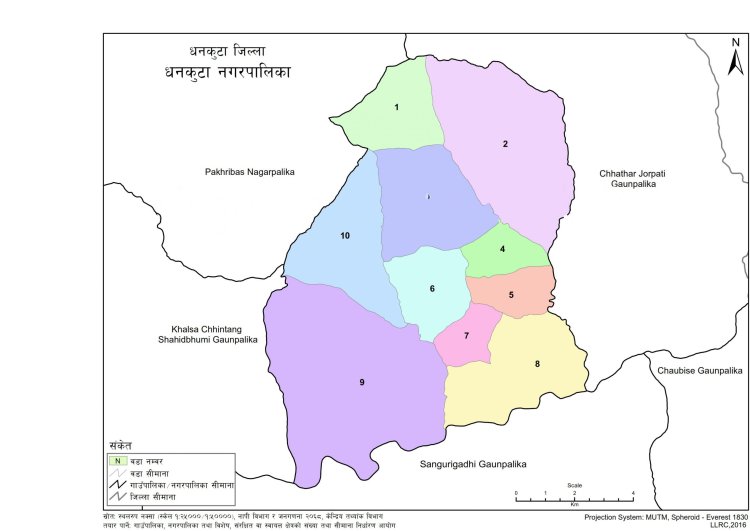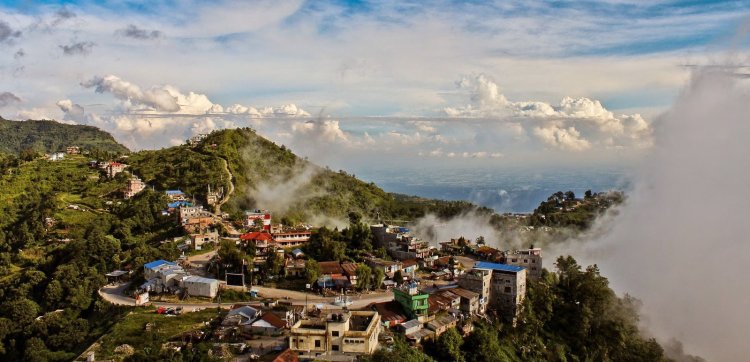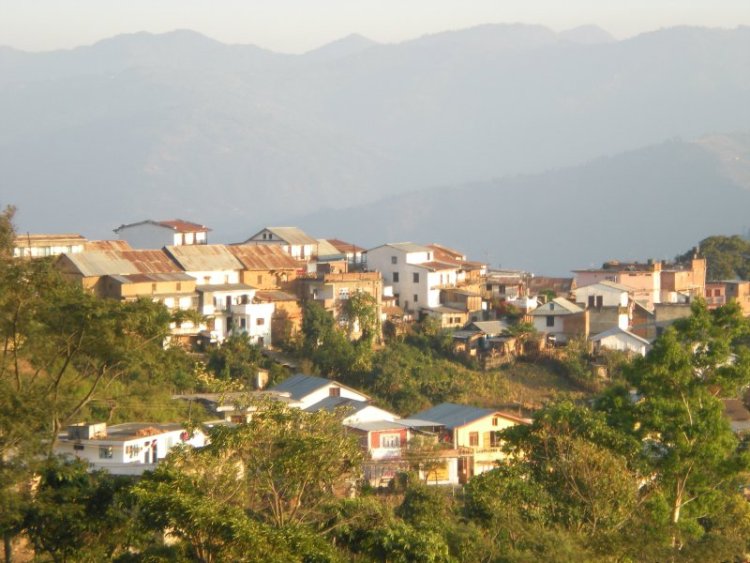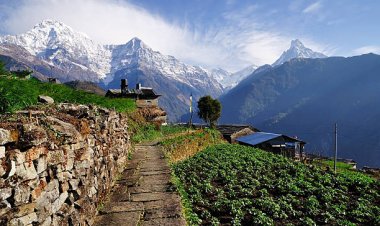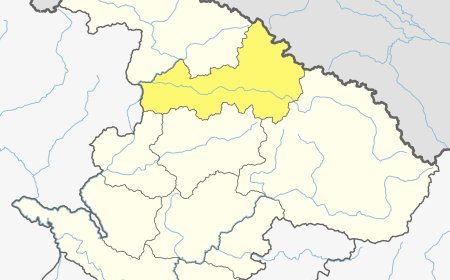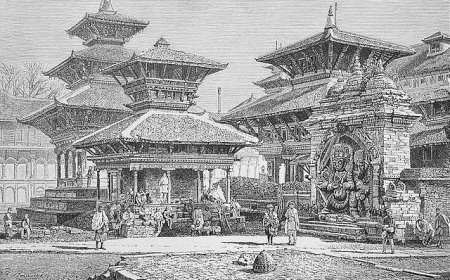Everything about Dhankuta District in Nepal
Dhankuta District, a hidden gem in Eastern Nepal, is renowned for its stunning landscapes, rich cultural heritage, and historical significance. This article delves into the district's unique features, prominent sites, and vibrant traditions.
Exploring the Cultural and Natural Wonders of Dhankuta District in Nepal
Introduction
Dhankuta District occupies the heart of Province 1, presenting a unique fusion of natural beauty and culture. The green hills, diverse ethnic populations, and historic landmarks make it an alluring destination for tourists who want to experience the true essence of Nepal. This article covers the geography, demographics, historical significance, and cultural practices of the district, along with all the must-see locations.
Geographical Overview
Dhankuta District is a hilly area with altitudes ranging between 300 to 2,500 meters above sea level. The district headquarters, Dhankuta Bazaar, is situated at an altitude of 1,192 meters. The region experiences a temperate climate, with temperatures ranging from 6.9°C in January to 27.9°C in June. Dhankuta also sees significant rainfall during the monsoon season, making the landscape lush and green.
Climatic Conditions in Dhankuta
| Month | Avg Max Temp (°C) | Avg Min Temp (°C) | Precipitation (mm) |
|---|---|---|---|
| Jan | 18.7 | 8.7 | 11.7 |
| Feb | 20.4 | 9.2 | 15.4 |
| Mar | 24.0 | 12.8 | 26.9 |
| Apr | 26.6 | 15.8 | 52.9 |
| May | 27.4 | 18.0 | 113.7 |
| Jun | 27.9 | 20.3 | 143.6 |
| Jul | 27.9 | 20.7 | 239.0 |
| Aug | 28.0 | 20.5 | 160.6 |
| Sep | 27.4 | 19.4 | 120.4 |
| Oct | 26.4 | 15.8 | 35.2 |
| Nov | 23.4 | 11.7 | 10.9 |
| Dec | 20.4 | 8.4 | 6.4 |
Demographics
According to the 2021 census, Dhankuta District has a population of 150,599, with a literacy rate of 73.9%. The district has a sex ratio of 1040 females per 1000 males.
| Year | Population |
|---|---|
| 1981 | 129,781 |
| 1991 | 146,386 |
| 2001 | 166,479 |
| 2011 | 163,412 |
| 2021 | 150,599 |
Ethnic groups in the district include:
- Chhetri: 19.93%
- Rai: 19.70%
- Limbu: 13.85%
- Magar: 10.35%
- Tamang: 6.56%
Dhankuta Religious Diversity
Dhankuta is home to a variety of religious practices. The religious breakdown is as follows:
- Hindus: 49.56%
- Kirati: 34.74%
- Buddhists: 13.11%
Cultural Heritage
Historically, Dhankuta was the administrative center of northeastern Nepal until around 1963, after which it became part of the decentralized Panchayat system. Its strategic location along the North-South Koshi Highway has made it an important trading hub over the years.
Dhankuta is also known for its progressive community, which embraced education and cultural development early on. One of Nepal’s first high schools outside of the Kathmandu Valley was established here, and the district continues to promote traditional music and dance.
Must-Visit Places
- Hile: A gateway to Dhankuta and Panchthar districts, known for its scenic views. It serves as a trekking route to religious sites like Pathibhara Temple.
- Pathibhara Temple: Located about 3 kilometers from Hile, this temple is a popular pilgrimage site for blessings related to prosperity and well-being.
- Rajarani Valley: Once the capital of the Limbu Kingdom, the valley is known for its ancient ponds.
- Rani Bhan Forest: A well-conserved forest with rhododendrons and pine trees, ideal for nature lovers.
Local Cuisine
Dhankuta’s rich cultural heritage is reflected in its local food, with dishes like Dhido and various fresh vegetables being common staples.
Full-Day Adventure Activities
Dhankuta offers numerous trekking routes through lush forests and hills, providing breathtaking views of the surrounding landscape.
Unique Festivals
Dhankuta’s cultural vibrancy is showcased through its many festivals, including:
- Dashain: Celebrates the victory of good over evil.
- Tihar: The festival of lights, which also honors animals like crows and dogs.
- Holi: The Festival of Colors, marking the arrival of spring.
- Maghe Sankranti: Celebrates the winter solstice with special foods like sesame seeds and molasses.
Conclusion
Dhankuta District epitomizes Nepalese cultural heritage and natural beauty. With its historical sites, vibrant festivals, and scenic landscapes, Dhankuta invites travelers to explore the essence of eastern Nepal.
Frequently Asked Questions (FAQs)
1. What is the best time to visit Dhankuta?
The best time to visit Dhankuta is from October to March when the weather is pleasant and rainfall is minimal.
2. How can I reach Dhankuta?
Dhankuta is accessible by road via the Koshi Highway. The nearest airport is located in Biratnagar, from where you can take a bus or a private vehicle to reach Dhankuta.
3. What are the major ethnic groups in Dhankuta?
The major ethnic groups in Dhankuta include Chhetri, Rai, Limbu, Magar, and Tamang.
4. Are there any trekking routes in Dhankuta?
Yes, Dhankuta offers several trekking routes, including trails leading to Pathibhara Temple and the Rani Bhan Forest.
5. What are the main festivals celebrated in Dhankuta?
Dashain, Tihar, Holi, and Maghe Sankranti are among the main festivals celebrated in Dhankuta.
6. Is Dhankuta safe for tourists?
Yes, Dhankuta is considered a safe destination for tourists. The local people are welcoming, and the district generally experiences low crime rates.
7. What is the literacy rate in Dhankuta?
The literacy rate in Dhankuta District is 73.9%, according to the 2021 census.
8. Can I experience traditional Nepalese music and dance in Dhankuta?
Yes, Dhankuta has a rich cultural heritage and is known for its traditional music and dance. You can witness local performances during festivals or special cultural events.
9. What are some local dishes to try in Dhankuta?
Local dishes to try in Dhankuta include Dhido (a traditional dish made from millet or maize), fresh vegetables, and locally grown fruits. The food reflects the district’s cultural diversity.
What's Your Reaction?



























































































